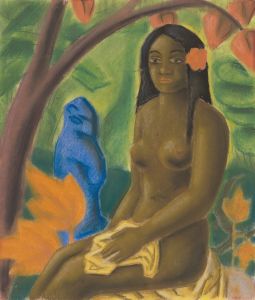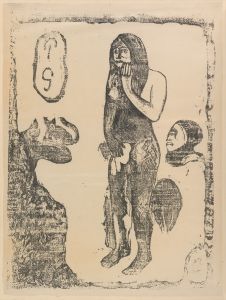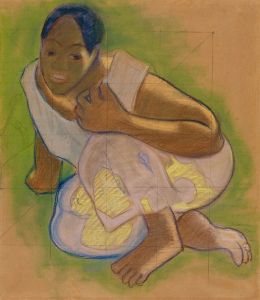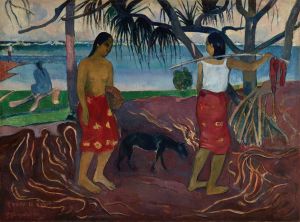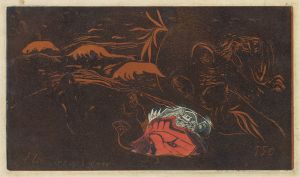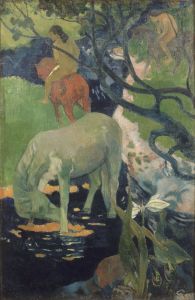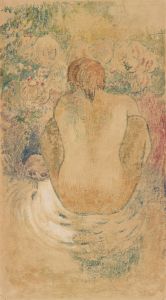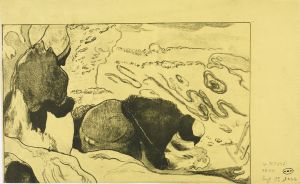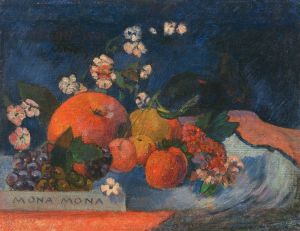
The Ancestors of Tehamana OR Tehamana Has Many Parents
A hand-painted replica of Paul Gauguin’s masterpiece The Ancestors of Tehamana OR Tehamana Has Many Parents, meticulously crafted by professional artists to capture the true essence of the original. Each piece is created with museum-quality canvas and rare mineral pigments, carefully painted by experienced artists with delicate brushstrokes and rich, layered colors to perfectly recreate the texture of the original artwork. Unlike machine-printed reproductions, this hand-painted version brings the painting to life, infused with the artist’s emotions and skill in every stroke. Whether for personal collection or home decoration, it instantly elevates the artistic atmosphere of any space.
The Ancestors of Tehamana (also known as Tehamana Has Many Parents) is a painting created in 1893 by the French Post-Impressionist artist Paul Gauguin. This work is one of Gauguin's notable pieces from his time in Tahiti, where he sought to immerse himself in what he perceived as a more "primitive" and unspoiled culture, away from the industrialized Western world. The painting is currently housed in the Art Institute of Chicago.
The subject of the painting is Tehamana, a young Tahitian woman who is believed to have been Gauguin's companion during his first stay in Tahiti from 1891 to 1893. In the portrait, Tehamana is depicted seated, dressed in a traditional Tahitian garment known as a pareu, with a white blouse. Behind her, the background features a combination of symbolic and decorative elements, including Polynesian motifs and references to Tahitian spiritual beliefs. These elements reflect Gauguin's fascination with the culture and mythology of the island, as well as his tendency to incorporate imagined or stylized interpretations of local traditions into his work.
The title of the painting, "The Ancestors of Tehamana," suggests a connection to the spiritual or ancestral heritage of the subject. However, the exact meaning of the title remains open to interpretation. Gauguin often used titles that were evocative rather than descriptive, leaving room for ambiguity and personal reflection.
The painting is characteristic of Gauguin's style during this period, marked by bold colors, flattened forms, and a synthesis of Western and non-Western artistic influences. His use of vibrant hues and simplified shapes was influenced by his desire to move away from the naturalism of European art and toward a more symbolic and expressive approach.
While Gauguin's works from Tahiti are celebrated for their innovation and aesthetic qualities, they have also been the subject of critical scrutiny. Modern scholarship has highlighted the colonial context of Gauguin's time in Tahiti, including his relationships with local women and his romanticized portrayal of Polynesian culture. These aspects of his life and work continue to be topics of discussion in art history and postcolonial studies.
"The Ancestors of Tehamana" remains an important example of Gauguin's exploration of identity, spirituality, and cultural representation, offering insight into his artistic vision and the complexities of his engagement with Tahitian culture.






